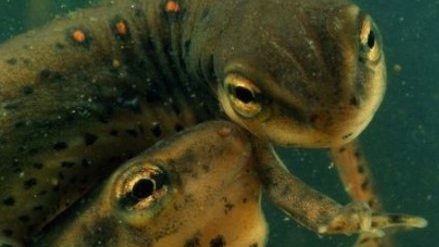Although life as we know it depends on oxygen, some organisms thrive in conditions devoid of oxygen. These anaerobic creatures, who live in some of the harshest environments on the planet, have developed fantastic survival techniques. They demonstrate the versatility of nature, from deep oceans to secret underground habitats.
Here are seven amazing animals that do not require oxygen to survive.
1. Loriciferans: The secrets of the deep sea
Undiscovered until the 1980s, loriciferans are microscopic organisms that live in the ocean’s deepest depths and have a fantastic capacity for oxygen-free survival. These organisms, found in basins with anoxic sediments, such as the Mediterranean Sea’s L’Atalante, contradict accepted survival strategies by using hydrogen sulfide.
This poisonous substance is prevalent in their environment as an energy source. They demonstrate a remarkable adaptation to one of the most hostile environments on Earth by using this molecule in place of oxygen through anaerobic respiration.
2. Henneguya salminicola: The parasite that avoids oxygen
By completely excluding oxygen from its metabolic processes, the intriguing multicellular parasite Henneguya salminicola, related to corals and jellyfish, defies biological norms. Unlike any other multicellular organism, it lacks mitochondria, the organelles in cells responsible for aerobic respiration, a chemical process that uses oxygen to convert glucose into energy. Instead, this parasite grows in the tissues of salmon and other fish, taking nutrients straight from the host and essentially outsourcing its energy requirements.
3. Another wonder of the deep sea: Spinoloricus sp. nov.
The L’Atalante basin’s oxygen-free depths are ideal for the growth of Spinoloricus, a rare Loriciferan. As one of the few metazoans adapted to anoxic environments, Spinoloricus has evolved hydrogenosomes, organelles that substitute mitochondria for energy generation. This demonstrates life’s adaptability to harsh conditions.
4. Shrimp with osmolyte-rich brine
Brine shrimp, frequently found in brine pools and saline lakes, are remarkably resilient to harsh environments, especially low oxygen levels. They go into a unique state called anoxia-induced quiescence when their metabolism slows down, and they can survive in stressful situations like small brine pools with low oxygen levels.
Although they don’t wholly survive without oxygen, their remarkable flexibility is demonstrated by their capacity to withstand extended periods of low oxygen. Thus, they are an intriguing illustration of how nature survives.
5. The exception for mammals is the naked mole-rat
Naked mole-rats, native to East Africa, can withstand low oxygen levels by reducing their heart rate and metabolism. They temporarily survive without oxygen by switching to a fructose-based metabolic pathway similar to plants.
6. Residents of hydrothermal vents: Tubeworms
Tubeworms found near hydrothermal vents in the ocean thrive in oxygen-deficient settings by relying on a unique symbiotic interaction. These amazing animals have bacteria in their tissues that use chemosynthesis to turn hydrogen sulfide from the vents into energy. This technique allows tubeworms to flourish without needing sunshine, revealing an intriguing, self-sustaining biosphere deep within the water.
7. Some nematodes that survive in harmful soils
Nematodes are among the most common organisms on the planet, and they can survive in various environments, from the deepest ocean trenches to the highest mountain peaks. Some species are remarkably resilient, and they can survive extreme conditions like anoxia by a process called cryptobiosis, in which their metabolic activity virtually stops, enabling them to survive for extended periods without oxygen until more favourable conditions arise.
Conclusion
Anaerobic species illustrate life’s fantastic adaptability. They flourish in oxygen-free habitats like deep waters and desert soils. Their distinct physiological and metabolic mechanisms reveal how life can conquer even the most complex situations.

